LG Optimus 4X HD: Tegra 3 Handsets Stay Global
by Vivek Gowri on August 29, 2012 4:30 AM EST- Posted in
- Smartphones
- LG
- Ice Cream Sandwich
- Mobile
- Tegra 3
At this point, Tegra 3 is mostly a known quantity, but the O4X HD was my first day-to-day experience with a T3-based smartphone. It's a pretty fun SoC, for sure. This is a pretty impressive amount of performance packed into a phone, but it does come with some drawbacks. Think of it like the first generation of quad-core notebooks – there’s too much power here. Simple as that. It’s fast, yes, breathtakingly so. But it’s also pretty power hungry, and heats up more than you would ever expect a phone to do. I can't wait for the die-shrunken Tegra 3+, which will certainly go a long ways towards quelling these issues.
Something worth noting is the lack of any immediate day to day performance differences between this and Krait-based devices like the One S or even older A9 dual cores like the Galaxy S2 or Galaxy Nexus - they're all fast enough to run a stock or lightly-skinned ICS build smoothly, and all of the remaining UI slowdowns are simply issues internal to ICS. Google basically admitted as much with Jelly Bean's Project Butter - no matter how much hardware you throw at ICS, those occasional frame rate dips will continue to exist. I'm admittedly not a particularly demanding smartphone user like, say, Brian is. I do a lot of messaging, a decent amount of browsing, and then the usual smartphone stuff like Facebook, Gmail, Twitter, camera, etc. But almost no gaming, and not that much in the way of HD video decoding. Honestly, Tegra 3 hasn't done anything for me that OMAP4 and Exynos 4210 weren't already able to do just fine. So while it's awesome that quad-cores have come to phones, I'm not certain that it'll change your smartphone usage patterns significantly unless you have a specific need for a ton of compute horsepower.

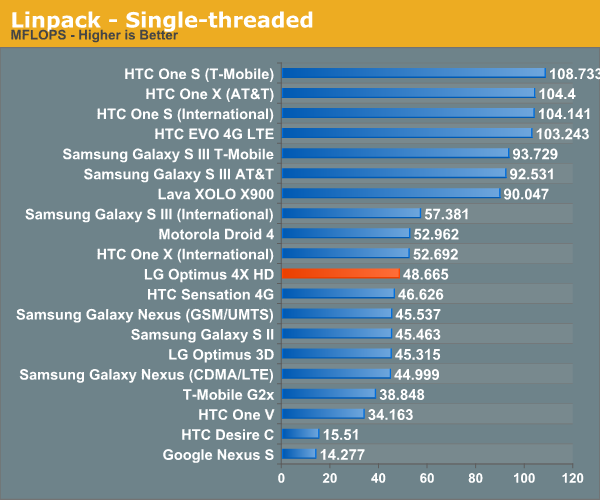
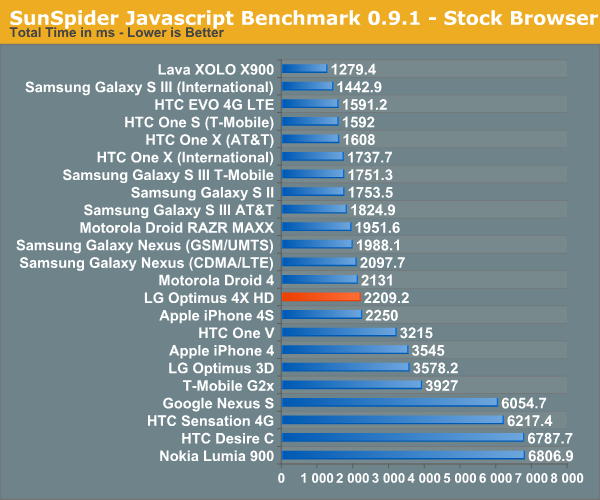
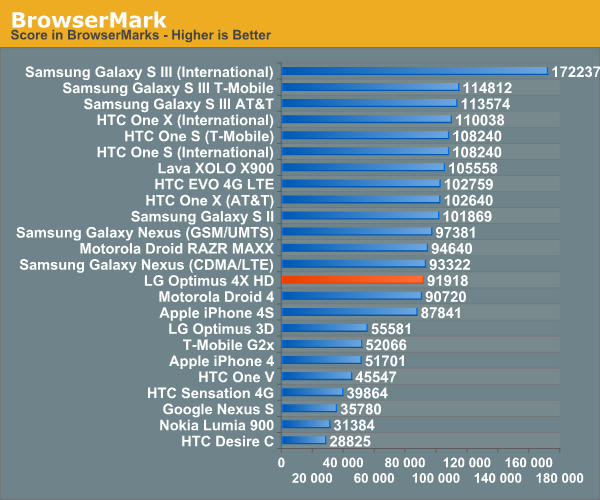
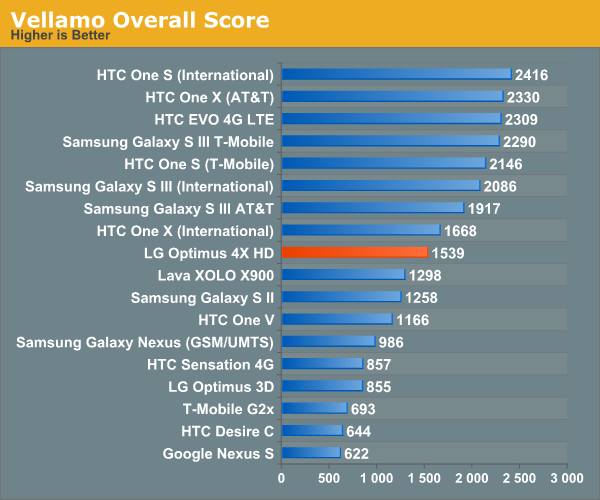
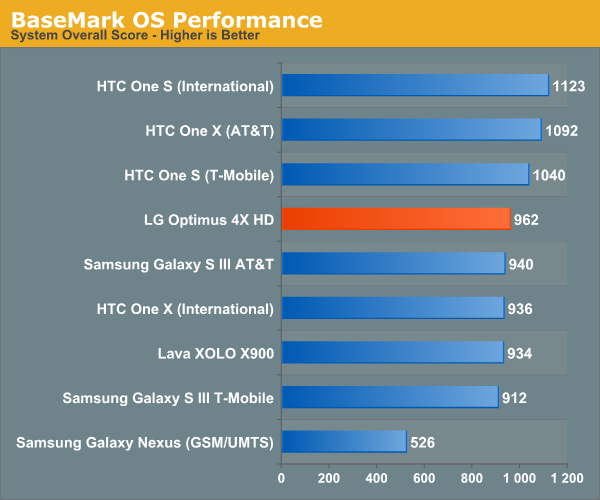
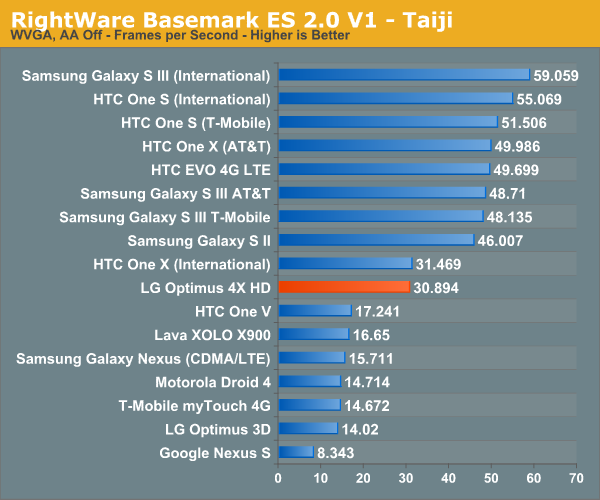
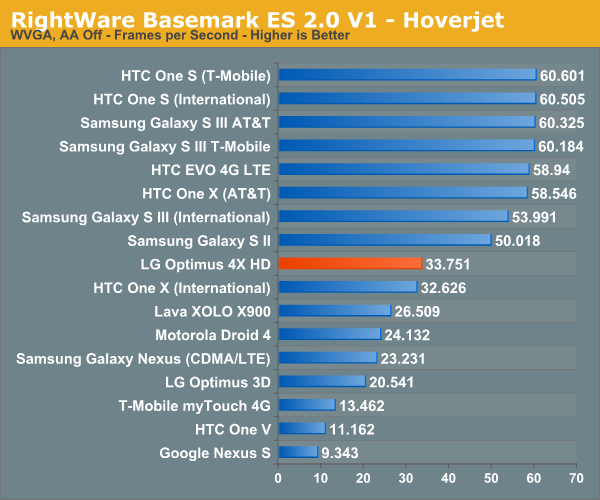
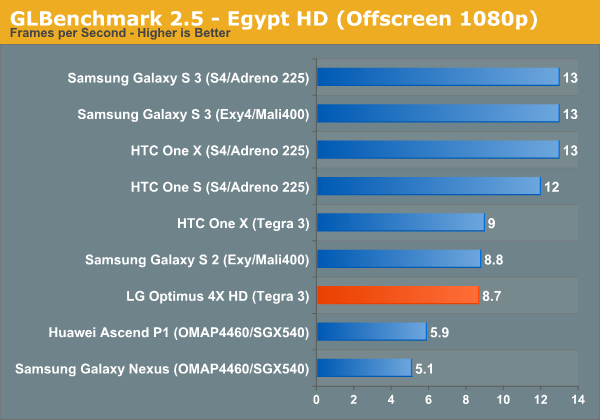
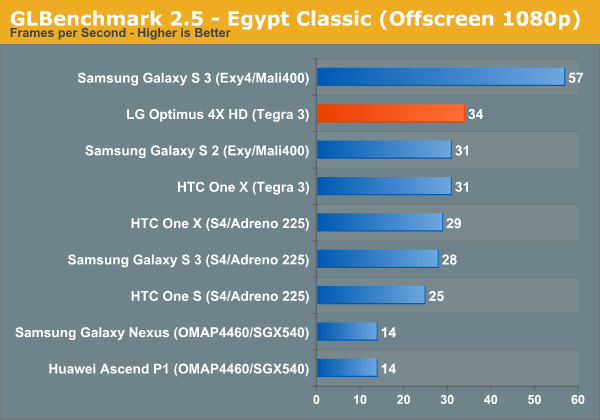










46 Comments
View All Comments
lowlymarine - Wednesday, August 29, 2012 - link
The chart on the first page says the Galaxy Nexus has an "ARM Mali-400" for the GPU, but I'm fairly certain it actually uses a PowerVR SGX540.lowlymarine - Wednesday, August 29, 2012 - link
Also, no version of the Galaxy Nexus has a MicroSD slot, to my knowledge. And on page 7:"from an optical standpoint it comes with what I believe is a 4P (4 plastic elements) system with a focal length of <focal>mm."
Not sure what's going on there.
Excellent review overall though. I have to agree on the button layout, it's a shame they didn't use the ICS default buttons ans instead chose to stick to a legacy menu button.
VivekGowri - Wednesday, August 29, 2012 - link
Missed a couple of things when I was switching it from SGS2 to the Galaxy Nexus. The focal length is 3.2mm - I just put in a placeholder when I was writing and simply forgot to put in the value when the review went live.Skidmarks - Wednesday, August 29, 2012 - link
It seems to have very capable hardware but is truly a dreadful looking thing IMO.Belard - Wednesday, August 29, 2012 - link
Agreed... then again, look at it this way. When a touch-screen device, such as a phone is made - everything is made around the screen. Right? That doesn't leave much room for much of anything else. Other than the size, thickness, materials, placement of buttons. If you GO BACK in time in the days of candy-bar, sliders, flip-phones - someone like SONY alone had about 60 different phones on the market at once time. Now SONY has about a dozen active smart phone designs (almost all are rectangle with curved corners) - some are quite attractive. But few are available - or they are at the SONY STORE at full price. at&t only sells 1 SONY phone. (I don't consider SONY because their track record with Android is sub-par at this time and their love for those rubber covers over the USB port which I have to fight to remove)You had different colors, different shape of buttons, different size screens. Remember the days of the LG Chocolate?
The required touch-screen kill design ideas. But looking at MC/ Samsung / SONY and NOKIA - there are style DNA that can still be applied to the shape. SONY's style tends to make the phone bulkier than it should be.
Mike0 - Wednesday, August 29, 2012 - link
Also, the International One X has 32GB NAND, not 16GB unless you're referring to the Snapdragon S4 variety which would be useless in this comparison :PMike0 - Wednesday, August 29, 2012 - link
And it's screen is Super LCD2, if you're including technical terms like SAMOLED.Mike0 - Wednesday, August 29, 2012 - link
Also also, (last one I promise :P) the latest 4.0.4 update for the One X International dramatically improves it's scores in BrowserMark (Some people are getting 125000+) and Vellamo (Over 2000 now) and probably more benchmarks so it may be worth updating your results.VivekGowri - Wednesday, August 29, 2012 - link
Yeah, I copied the table over from another review and missed a few things when I was changing them. Missed the GPU/SD card thing when I changed from SGS2 to SGN, and the NAND when I changed from One X (AT&T) to One X (Intl.) Should be fixed now though.arnoudw - Thursday, August 30, 2012 - link
The update to 4.0.4 also drastically improved battery life. Here are some tests: http://tweakers.net/nieuws/83464/update-htc-one-x-...